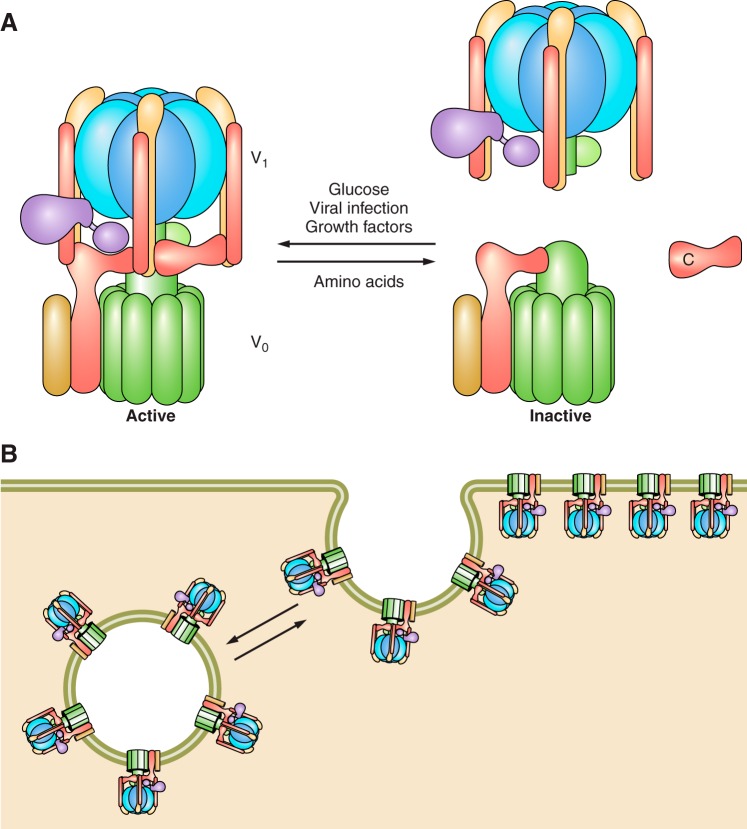FIGURE 2.
Regulation of V-ATPase activity. A: V-ATPase activity is regulated in vivo by reversible dissociation of the complex into its component V1 and V0 domains, which results in inactivation of the complex. In mammalian cells, regulated assembly occurs in response to a number of cues, including changes in glucose concentration, starvation of amino acids, exposure to growth factors, upon maturation of dendritic cells, and during infection of cells by influenza virus. PI3K is involved in controlling assembly in response to changes in glucose concentration, during dendritic cell maturation and during viral infection, but not in response to changes in amino acid levels. B: V-ATPase activity in epithelial cells in the kidney and epididymis is controlled by regulated trafficking of complexes to the apical membrane of these cells. In both systems, trafficking is controlled by PKA downstream of a bicarbonate-sensitive adenylate cyclase.

